Democratising Smart Cities? Penta-Helix Multistakeholder Social Innovation Framework
Abstract
:1. Introduction: Democratising the Technocratic Smart City
2. Literature Review: Social Innovation (SI) Perspective
2.1. Social Innovation (SI)
2.2. Rethinking Multistakeholder Helix Frameworks from the SI Perspective: Triple-, Quadruple-, and Penta-Helix
2.3. Resulting Business/Social Models in Smart Cities
3. Methodology: Mapping Out the Penta-Helix Multistakeholder Policy Framework
3.1. Action Research Fieldwork
3.2. Research Design: Triangulation
3.3. Data Collection and Analysis
3.3.1. In-Depth Interviews
3.3.2. Validation Workshops
3.4. Comparing Three Case Studies: Follower City Profile
4. Results, Discussion, and Analysis: Comparing Three Follower Cities in H2020-SCC-Replicate Project
4.1. Five Strategic Dimensions
4.2. Empirical Results
5. Conclusions
Funding
Acknowledgments
Conflicts of Interest
Appendix A
| Composition of Organisations Represented by the 75 Anonymised Strategic Stakeholders (25 Per Follower City) Structured via Penta-Helix Framework Participating in the Fieldwork Action Research from February 2017 to December 2018 | |||||
|---|---|---|---|---|---|
| Essen (25) | 1 Public (13) | 2 Private (3) | 3 Academia (4) | 4 Civic Society (2) | 5 Soc E/A (3) |
|
|
|
|
| |
| Lausanne (25) | 1 Public (9) | 2 Private (3) | 3 Academia (6) | 4 Civic Society (4) | 5 Soc E/A (3) |
|
|
|
|
| |
| Nilüfer (25) | 1 Public (5) | 2 Private (8) | 3 Academia (5) | 4 Civic Society (3) | 5 Soc E/A (4) |
|
|
|
|
| |
|
| (1) Email address (2) What is your name and surname? (3) AGE
(7) ROLE IN YOUR ORGANISATION |
|
| In this section, we will kindly ask you to answer to your question about the institutions/organizations operating in your (follower) city. Remember that the answers will be anonymised: (8) COMPOSITION (1st STRATEGIC DIMENSION) Could you please select the stakeholder group that you consider you belong to in the context of your (follower) city? (You can select more than one, if this is the case.)
Which is/are the most influential(s) stakeholder group(s) in your (follower) city?
Could you please rate how proactive are these groups of stakeholders in your (follower) city?
Sometimes Always (11) Could you please detail which organisation are you referring to? Name the institution/organisation, please. |
|
| (12) KNOWLEDGE ABOUT PPP (4th STRATEGIC DIMENSION) Do you know what does Public Private Partnership (PPP) mean?
(14) MOST SUITABLE BUSINESS/SOCIAL MODEL (5th STRATEGIC DIMENSION) Could you rate the following types of business models’ suitability level for your (follower) city, in your opinion?
It could be explored further Definitely (15) BY SECTORS Could you please select the most suitable business/social model for each smart sector in your (follower) city?
Mobility ICT Other |
References
- Habermas, J. The Lure of Technocracy; Polity Press: London, UK, 2015. [Google Scholar]
- Albino, V.; Berardi, U.; Dangelico, R.M. Smart cities: Definitions, dimensions, performance, and initiatives. J. Urban Technol. 2015, 22, 3–21. [Google Scholar] [CrossRef]
- Caragliu, A.; Del Bo, C.F. Smart innovative cities: The impact of smart city policies on urban innovation. Technol. Forecast. Soc. Chang. 2019, 142, 373–383. [Google Scholar] [CrossRef]
- Desdemoustier, J.; Crutzen, N.; Giffinger, R. Municipalities’ understanding of the Smart City concept: An exploratory analysis in Belgium. Technol. Forecast. Soc. Chang. 2019, 142, 129–141. [Google Scholar] [CrossRef]
- Nesti, G.; Graziano, P.R. The democratic anchorage of governance networks in smart cities: An empirical assessment. Public Manag. Rev. 2019, 22, 648–667. [Google Scholar] [CrossRef]
- Nilssen, M. To the smart city and beyond? Developing a typology of smart urban innovation. Technol. Forecast. Soc. Chang. 2018, 142, 98–104. [Google Scholar] [CrossRef]
- Ranchordás, S. Nudging citizens through technology in smart cities. Int. Rev. Law Comput. Technol. 2019, 1–23. [Google Scholar] [CrossRef]
- Trencher, G. Towards the smart city 2.0: Empirical evidence of using smartness as a tool for tackling social challenges. Technol. Forecast. Soc. Chang. 2018, 142, 117–128. [Google Scholar] [CrossRef]
- Vanolo, A. Is there anybody out there? The place and role of citizens in tomorrow’s smart cities. Futures 2016, 82, 26–36. [Google Scholar] [CrossRef]
- Komninos, N.; Kakderi, C. Smart Cities in the Post-Algorithmic Era: Integrating Technologies, Platforms and Governance; Edward Elgar: Chentelham, UK, 2019. [Google Scholar]
- Zuboff, S. The Age of Surveillance Capitalism: The Fight for a Human Future at the New Frontier of Power; Profile: London, UK, 2019. [Google Scholar]
- Kitchin, R. The real-time city? Big data and smart urbanism. Geo J. 2014, 79, 1–14. [Google Scholar] [CrossRef] [Green Version]
- Janssen, M.; Kuk, G. The challenges and limits of big data algorithms in technocratic governance. Gov. Inf. Q. 2016, 33, 371–377. [Google Scholar] [CrossRef]
- Johnson, P.A.; Robinson, P.J.; Philpot, S. Type, tweet, tap, and pass: How smart city technology is creating a transactional citizen. Gov. Inf. Q. 2019, 37, 101414. [Google Scholar] [CrossRef]
- Madsen, A.K. Data in the smart city: How incongruent frames challenge the transition from ideal to practice. Big Data Soc. 2018, 5, 1–13. [Google Scholar] [CrossRef]
- Barns, S. Making Sense of Platform Intermediation. In Platform Urbanism: Negotiating Platform Ecosystems in Connected Cities; Springer: Singapore, 2020. [Google Scholar]
- Fields, D.; Bissell, D.; Macrorie, R. Platform methods: Studying platform urbanism outside the black box. Urban Geogr. 2020, 41, 462–468. [Google Scholar] [CrossRef]
- Stehlin, J.; Hodson, M.; McMeekin, A. Platform mobilities and the production of urban space: Toward a typology of platformization trajectories. Environ. Plan. A Econ. Space 2020, 52, 1250–1268. [Google Scholar] [CrossRef]
- European Commission. Creating the Links for Scaling Smart Cities Solutions; H2020: Eindhoven, The Netherlands, 2016. [Google Scholar]
- European Commission. The Making of a Smart City: Best Practices across Europe; European Commission: Brussels, Belgium, 2017. [Google Scholar]
- European Commission. The Making of a Smart City: Policy Recommendations; European Commission: Brussels, Belgium, 2017. [Google Scholar]
- European Commission. Co-Creating Innovative Public Services for Citizens and Businesses; European Commission: Luxembourg, 2019. [Google Scholar]
- EIP-SCC. Towards a Joint Investment Programme for European Smart Cities: A Consultation Paper to Stimulate Action; European Commission: Brussels, Belgium, 2016. [Google Scholar]
- Mazzucato, M. Mission-Oriented Research & Innovation in the European Union: A Problem-Solving Approach to Fuel Innovation-Led Growth; European Commission: Brussels, Belgium, 2018. [Google Scholar]
- Vandervyvere, H. Recommendations on EU R&I and Regulatory Policies: Why May Replication (Not) Be Happening? EU Smart Cities Information System. D32. 3A. 2017. Available online: https://smartcities-infosystem.eu/newsroom/news/scis-policy-analysis-%E2%80%93-why-may-replication-not-be-happening (accessed on 21 December 2019).
- SCIS. Lighthouse Projects. 2019. Available online: https://smartcities-infosystem.eu/scc-lighthouse-projects (accessed on 21 December 2019).
- Forrer, J.; Kee, J.E.; Newcomer, K.E.; Boyer, E. Public-private partnerships and public accountability question. Public Adm. Rev. 2010, 70, 475–484. [Google Scholar] [CrossRef] [Green Version]
- Frug, G.E. The City: Private or Public? LSE Cities Working Papers: London, UK, 2017. [Google Scholar]
- Goldstein, B.T.; Mele, C. Governance within public–private partnerships and the politics of urban development. Space Polity 2016, 20, 194–211. [Google Scholar] [CrossRef]
- Grossi, G.; Pianezzi, D. Smart cities: Utopia or neoliberal ideology? Cities 2017, 69, 79–85. [Google Scholar] [CrossRef]
- Hall, D. Why Public-Private Partnerships Don’t Work: The Many Advantages of the Public Alternative; University of Greenwich: London, UK; PSIRU (Public Services International Research Unit): Greenwich, UK, 2015. [Google Scholar]
- Mazzucato, M. The Entrepreneurial State: Debunking Public vs. Private Sector Myths; AnthenPress: London, UK, 2015. [Google Scholar]
- Rossi, U. The variegated economics and the potential politics of the smart city. Territ. Politics Gov. 2016, 4, 337–353. [Google Scholar] [CrossRef]
- Kennedy, H.; Poell, T.; Van Dijck, J. Data and agency. Big Data Soc. 2015, 2, 1–7. [Google Scholar] [CrossRef]
- Paskaleva, K.; Cooper, I.; Linde, P.; Peterson, B.; Götz, C. Stakeholder engagement in the smart city: Making living labs work. In Transforming City Governments for Successful Smart Cities; Springer: Cham, Switzerland, 2015. [Google Scholar]
- Kummitha, R.K.R. Smart cities and entrepreneurship: An agenda for future research. Technol. Forecast. Soc. Chang. 2019, 149, 119763. [Google Scholar] [CrossRef]
- Harvey, D. The new urbanism and the communitarian trap. Harv. Des. Mag. 1997, 1, 68–69. [Google Scholar]
- Borsboom-Van Beurden, J.; Kallaos, J.; Gindroz, B.; Costa, S.; Riegler, J. Smart City Guidance Package: A Roadmap for Integrated Planning and Implementation of Smart City Projects; EIP-SCC: Brussels, Belgium, 2019. [Google Scholar]
- Hollands, R.G. Will the real smart city please stand up? City 2008, 12, 303–320. [Google Scholar] [CrossRef]
- Hollands, R.G. Critical interventions into the corporate smart city. Camb. J. Reg. Econ. Soc. 2014, 8, 61–77. [Google Scholar] [CrossRef]
- Kitchin, R.; Coletta, C.; Evans, L.; Heaphy, L.; Mac Donncha, D. Smart Cities, Urban Technocrats, Epistemic Communities and Advocacy Coalitions; The Programmable City Working Paper, 2017, Paper 26, Maynooth. Available online: https://osf.io/preprints/socarxiv/rxk4r/ (accessed on 8 September 2020).
- Cardullo, P.; Kitchin, R. Smart urbanism and smart citizenship: The Neoliberal Logic of ‘Citizen-Focused’ Smart Cities in Europe. Environ. Plan. C Politics Space 2019, 37, 813–830, The Programmable City Working Paper, 2018, Paper 39, Maynooth. [Google Scholar] [CrossRef] [Green Version]
- Engelbert, J.; Van Zoonen, L.; Hirzalla, F. Excluding citizens from the European smart city: The discourse practices of pursuing and granting smartness. Technol. Forecast. Soc. Chang. 2018, 142, 347–353. [Google Scholar] [CrossRef]
- Eubanks, V. Automating Inequality: How High-Tech Tools Profile, Police, and Punish the Poor; St. Martin’s Press: New York, NY, USA, 2017. [Google Scholar]
- Kempin Reuter, T. Human rights and the city: Including marginalized communities in urban development and smart cities. J. Hum. Rights 2019, 18, 382–402. [Google Scholar] [CrossRef]
- Kourtit, K.; Nijkamp, P. Smart cities in the innovation age. Innov. Eur. J. Soc. Sci. Res. 2012, 25, 93–95. [Google Scholar] [CrossRef]
- Calzada, I. (Un)Plugging smart cities with urban transformations: Towards multistakeholder city-regional complex urbanity? URBS Rev. Estud. Urbanos Cienc. Soc. 2016, 6, 25–45. [Google Scholar]
- Calzada, I. Deciphering smart city citizenship: The techno-politics of data and urban co-operative platforms. Rev. Int. Estud. Vascos RIEV 2018, 63, 42–81. [Google Scholar] [CrossRef]
- Calzada, I. From smart cities to experimental cities? In Co-Designing Economies in Transition: Radical Approaches in Dialogue with Contemplative Social Sciences; Giorgino, V.M.B., Walsh, Z., Eds.; Springer: Cham, Switzerland, 2018. [Google Scholar] [CrossRef]
- Calzada, I. Local entrepreneurship through a multistakeholders’ tourism living lab in the post-violence/peripheral era in the Basque Country. Reg. Sci. Policy Pract. 2018, 11, 451–466. [Google Scholar] [CrossRef]
- Calzada, I. (Smart) citizens from data providers to decision-makers? The case study of Barcelona. Sustainability 2018, 10, 3252. [Google Scholar] [CrossRef] [Green Version]
- Calzada, I.; Cowie, P. Beyond smart and data-driven city-regions? Rethinking stakeholder-helixes strategies. Reg. Mag. 2017, 308, 25–28. [Google Scholar] [CrossRef]
- SUI (Smart Urban Intermediaries). Smart Cities, Social Innovation and Smart Urban Development; University of Edinburgh: Edinburgh, UK, 2018. [Google Scholar]
- Calzada, I. Replicating Smart Cities: The City-to-City Learning Programme in the Replicate EC-H2020-SCC Project. Smart Cities 2020, 3, 978–1003. [Google Scholar] [CrossRef]
- Butzlaff, F. Between empowerment and abuse: Citizen participation beyond the post-democratic turn. Democratization 2020, 27, 477–493. [Google Scholar] [CrossRef] [Green Version]
- Angelidou, M.; Psaltoglou, A. An empirical investigation of social innovation initiatives for sustainable urban development. Sustain. Cities Soc. 2017, 33, 113–125. [Google Scholar] [CrossRef]
- Bartels, K. Transforming the relational dynamics of urban governance: How social innovation research can create a trajectory for learning and change? Urban Stud. 2020. [Google Scholar] [CrossRef]
- Bund, E.; Gerhard, U.; Hoelscher, M. A methodological framework for measuing social innovation. Hist. Soc. Res. 2015, 40, 48–78. [Google Scholar]
- Caroli, M.G.; Fracassi, E.; Maiolini, R.; Pulino, S.C. Exploring social innovatoin components and attributes: A taxonomy proposal. J. Soc. Entrep. 2018, 9, 94–109. [Google Scholar] [CrossRef]
- Christmann, G.B. Introduction: Struggling with innovations. Social innovations and conflicts in urban development and planning. Eur. Plan. Stud. 2020, 28, 423–433. [Google Scholar] [CrossRef] [Green Version]
- Engelbrecht, H.J. The (social) innovation – subjective well-being nexus: Subjective well-being impacts as an additional assessment metric of technological and social innovations. Innov. Eur. J. Soc. Sci. Res. 2018, 31, 317–332. [Google Scholar] [CrossRef]
- European Commission. Social innovation research in the European Union. Approaches, Findings and Future Directions; Publications Office of the European Union: Luxembourg, 2010. [Google Scholar]
- Keith, M.; Calzada, I. Back to the ‘Urban Commons’? Social Innovation through New Co-Operative Forms in Europe; Bridging European Urban Transformations. ESRC: Brussels, Belgium, 2018. [Google Scholar] [CrossRef]
- Moulaert, F.; MacCallum, D. Advanced Introduction to Social Innovation; Edward Elgar: Cheltenham, UK, 2019. [Google Scholar]
- Moulaert, F.; Martinelli, F.; González, S.; Swyngedouw, E. Introduction: Social Innovation and Governance in European Cities. Eur. Urban Reg. Stud. 2007, 14, 195–209. [Google Scholar] [CrossRef]
- Moulaert, F.; MacCallum, D.; Mehmood, A.; Hamdouch, A. The International Handbook on Social Innovation: Collective Action, Social Learning and Transdisciplinary Research; Edward Elgar: Cheltenham, UK, 2013. [Google Scholar]
- Nicholls, A.; Murdock, A. The Nature of Social Innovation; Palgrave Macmillan: London, UK, 2012. [Google Scholar]
- Pel, B.; Wittmayer, J.; Dorland, J.; Soggard Jorgensen, M. Unpacking the social innovation ecosystem: An empirically grounded typology of empowering network constellations. Innov. Eur. J. Soc. Sci. Res. 2019, 33, 311–336. [Google Scholar] [CrossRef] [Green Version]
- Preskill, H.; Beer, T. Evaluating Social Innovation; Center for Evaluation Innovation: Washington, DC, USA, 2012. [Google Scholar]
- Sabato, S.; Vanhercke, B.; Verschraegen, G. Connecting entrepreneurship with policy experimentation? The EU framework for social innovation. Innov. Eur. J. Soc. Sci. Res. 2017, 30, 147–167. [Google Scholar] [CrossRef]
- Schubert, C. Social innovation. A new instrument of social change. In Innovation society today, Perspectives, Fields, and Cases; Rammert, W., Windeler, A., Hutter, M., Knoblauch, H., Eds.; Springer VS: Wiesbaden, Germany, 2018. [Google Scholar]
- Terstriep, J.; Rehfeld, D.; Kleverbeck, M. Favourable social innovation ecosystem(s)—An explorative research. Eur. Plan. Stud. 2020, 28, 881–905. [Google Scholar] [CrossRef]
- Vadrot, A.B.M. Re-thinking the conditions for social change and innovation. Innov. Eur. J. Soc. Sci. Res. 2020, 33, 1–3. [Google Scholar] [CrossRef] [Green Version]
- Mihci, H. Is measuring social innovation a mission impossible? Innov. Eur. J. Social Sci. Res. 2019, 33, 337–367. [Google Scholar] [CrossRef]
- Moulaert, F.; Mehmood, A. Towards a social innovation (SI) based epistemology in local development analysis: Lessons from twenty years of EU research. Eur. Plan. Stud. 2020, 28, 434–453. [Google Scholar] [CrossRef]
- Poppen, F.; Decker, R. The intermediary as an institutional entrepreneur: Institutional change and stability in triple-helix cooperation. Triple Helix 2018, 5, 9. [Google Scholar] [CrossRef]
- Van de Broeck, P.; Mehmood, A.; Paidakaki, A.; Parra, C. Social Innovation as Political Transformation through for a Better World; Edward Elgar Publishing: Cheltenham, UK; Northampton, MA, USA, 2019. [Google Scholar]
- Domanski, D.; Howaldt, J.; Kaletka, C. A comprehensive concept of social innovation and its implicationns for the local context—on the growing importance of social innovation ecosystems and infrastructures. Eur. Plan. Stud. 2020, 28, 454–474. [Google Scholar] [CrossRef]
- Baack, S. Datafication and empowerment: How the open data movement re-articulates notions of democracy, participation, and journalism. Big Data Soc. 2015, 2, 1–11. [Google Scholar] [CrossRef] [Green Version]
- Etzkowitz, H.; Leydesdorff, L. The dynamics of innovation: From national systems and ‘‘Mode 2’’ to a triple helix of university–industry–government relations. Res. Policy 2000, 29, 109–123. [Google Scholar] [CrossRef]
- Deakin, M.; Mora, L.; Reid, A. The research and innovation of smart specialisation strategies: The transition from the triple to quadruple helix. In Proceedings of the 27th International Scientific Conference on Economic and Social Development, Rome, Italy, 1–2 March 2018. [Google Scholar]
- Turner, B.S. Contemporary Citizenship: Four Types. J. Citizsh. Glob. Stud. 2017, 1, 10–23. [Google Scholar] [CrossRef] [Green Version]
- Calzada, I.; Almirall, E. Data Ecosystems for Protecting European Citizens’ Digital Rights. Transform. Gov. People Process. Policy TGPPP 2020, 14, 133–147. [Google Scholar] [CrossRef]
- Calzada, I.; Almirall, E. Barcelona’s grassroots-led urban experimentation: Deciphering the ‘data commons’ policy scheme. Zenodo 2019. Data for Policy 2019, 11–12 June, London, UCL. [Google Scholar] [CrossRef] [Green Version]
- Etzkowitz, H.; Ranga, M.; Dzisah, J.; Zhou, C. University-industry-government interaction: The triple helix model of innovation. Asia Pac. Tech Monit. 2007, 24, 14–23. [Google Scholar]
- Lawton Smith, H.; Leydesdorff, L. The triple helix in the context of global change: Dynamics and challenges. Prometheus 2014, 32, 321–336. [Google Scholar] [CrossRef] [Green Version]
- Lewontin, R.C. The Triple Helix: GENE, Organism, and Environment; Harvard University Press: Cambridge, MA, USA, 2000. [Google Scholar]
- Leydesdorff, L. The triple helix, quadruple helix, …, and an N-tuple of helices: Explanatory models for analyzing the knowledge-based economy? J. Knowl. Econ. 2012, 3, 25–35. [Google Scholar] [CrossRef] [Green Version]
- Leydesdorff, L.; Deakin, M. The triple-helix model of smart cities: A neo-evolutionary perspective. J. Urban Technol. 2011, 18, 53–63. [Google Scholar] [CrossRef]
- Leydesdorff, L.; Fritsch, M. Measuring the knowledge base of regional innovation systems in Germany in terms of a triple helix dynamics. Res. Policy 2006, 35, 1538–1553. [Google Scholar] [CrossRef] [Green Version]
- Deakin, M. Smart cities: The state-of-the-art and governance challenge. Triple Helix 2014, 1, 1–16. [Google Scholar] [CrossRef]
- Grimm, R.; Fox, C.; Baines, S.; Albertson, K. Social innovation, an answer to contemporary societal challenges? Locating the concept in theory and practice. Innov. Eur. J. Soc. Sci. Res. 2013, 26, 436–455. [Google Scholar] [CrossRef]
- Swyngedouw, E. Governance innovation and the citizen: The janus face of governance-beyond-the-state. Urban Stud. 2005, 42, 1991–2006. [Google Scholar] [CrossRef]
- Lombardi, P.; Giordano, S.; Caragliu, A.; Del Bo, C.; Deakin, M.; Nijkamp, P.; Kourtit, K. An Advanced Triple-Helix Network Model for Smart Cities Performance; Research Memorandum 2011-45; Vrije Universiteit: Amsterdam, The Netherlands, 2011. [Google Scholar]
- Goddard, J.; Kempton, L. The Civic University: Universities in Leadership and Management of Place; RR2016/01; University of Warwick: Warwick, UK, 2016. [Google Scholar] [CrossRef]
- Kummitha, R.K.R.; Crutzen, N. Smart cities and the citizen-driven internet of things: A qualitative inquiry into an emerging smart city. Technol. Forecast. Soc. Chang. 2019, 140, 44–53. [Google Scholar] [CrossRef]
- Vallance, P.; Tewdwr-Jones, M.; Kempton, L. Building collaborative platforms for urban innovation: Newcastle City Futures as a quadruple helix intermediary. Eur. Urban Reg. Stud. 2020, 1–7. [Google Scholar] [CrossRef]
- Afonso, O.; Monteiro, S.; Thompson, M. A growth model for the quadruple helix. J. Bus. Econ. Manag. 2012, 13, 849–865. [Google Scholar] [CrossRef] [Green Version]
- Ahonen, L.; Hämäläinen, T. CLIQ: A practical approach to the quadruple helix and more open innovation. In Sustaining Innovation. Collaboration Models in a Complex World; Macgregor, S., Carleton, T., Eds.; Springer: Cham, Switzerland, 2012. [Google Scholar]
- Carayannis, E.G.; Campbell, D.F.J. Mode 3 Knowledge Production in Quadruple Helix Innovation Systems; Springer: New York, NY, USA, 2012; Volume 7, pp. 1–63. [Google Scholar] [CrossRef]
- Cavallini, S.; Soldi, R.; Friedl, J.; Volpe, M. Using the Quadruple Helix Approach to Accelerate the Transfer of Research and Innovation Results to Regional Growth; Publications Office of the EU: Luxembourg, 2016. [Google Scholar]
- Sandoval, M. Entrepreneurial activism? Platform cooperativism between subversion and co-optation. Crit. Sociol. 2019, 46, 801–817. [Google Scholar] [CrossRef]
- Siapera, E.; Papadopoulou, L. Entrepreneurialism or cooperativism? J. Pract. 2016, 10, 178–195. [Google Scholar] [CrossRef]
- Iaione, C. Governing the Urban Commons. Ital. J. Public Law 2015, 7, 1–53. [Google Scholar]
- Bollier, D. Commoning as a Transformative Social Paradigm. The Next System Project. Available online: http://www.thenextsystem.org/commoning-as-a-transformative-social-paradigm/ (accessed on 21 July 2020).
- Calzada, I.; Cobo, C. Unplugging: Deconstructing the smart city. J. Urban Technol. 2015, 22, 23–43. [Google Scholar] [CrossRef]
- Calzada, I.D. Report on Conclusions of the Interviews and the Validation Workshops; University of Oxford: Oxford, UK, 2018. [Google Scholar]
- Carayannis, E.G.; Campbell, D.F.J. Triple helix, quadruple helix and quintuple helix and how do knowledge, innovation and the environment relate to each other? A proposed framework for a trans-disciplinary analysis of sustainable development and social ecology. Int. J. Soc. Ecol. Sustain. Dev. (IJSESD) 2010, 1, 41–69. [Google Scholar] [CrossRef]
- Halibas, A.S.; Sibayan, R.O.; Maata, R.L.R. The penta helix model of innovation in Oman: An HEI perspective. Interdiscip. J. Inf. Knowl. Manag. 2017, 12, 159–172. [Google Scholar] [CrossRef]
- Calzada, I. Smart City Citizenship; Elsevier Science Publishing Co Inc: Cambridge, MA, USA, 2020; ISBN 978-0-12-815300-0. [Google Scholar]
- Ostrom, E. Governing the Commons: The Evolution of Institutions for Collective Action; Cambridge University Press: Cambridge, UK, 1990. [Google Scholar]
- Tonkovic, A.M.; Veckie, E.; Veckie, V.W. Applications of Penta Helix Model in Economic Development. Econ. East. Croat. Yesterday Today Tommorow 2015, 4, 385–393. [Google Scholar]
- Donald, B.; Glasmeier, A.; Gray, M.; Lobao, L. Austerity in the city: Economic crisis and urban service decline? Camb. J. Reg. Econ. Soc. 2014, 7, 3–15. [Google Scholar] [CrossRef]
- Brogaard, L. The impact of innovation training on successful outcomes in public–private partnerships. Public Manag. Rev. 2017, 19, 1184–1205. [Google Scholar] [CrossRef]
- Prainsack, B. Logged out: Ownership, exclusion and public value in the digital data and information commons. Big Data Soc. 2019, 6, 1–15. [Google Scholar] [CrossRef]
- Murphy, G.B.; Tocher, N.; Ward, B. An Examination of Public Private Academic Partnerships: Does Program Success Enhance University Performance Outcomes? Public Organ. Rev. 2016, 16, 95–115. [Google Scholar] [CrossRef]
- Anderson, T.S.; Michael, E.K.; Peirce, J.J. Innovative approaches for managing public-private academic partnerships in big science and engineering. Public Organ. Rev. 2012, 12, 1–22. [Google Scholar] [CrossRef]
- Callon, M. The role of lay people in the production and dissemination of scientific knowledge. Sci. Technol. Soc. 1999, 4, 81–94. [Google Scholar] [CrossRef]
- Ng, S.T.; Wong, J.M.W.; Wong, K.K.W. A public private people partnerships (P4) process framework for infrastructure development in Hong Kong. Cities 2013, 31, 370–381. [Google Scholar] [CrossRef]
- Späth, P.; Knieling, J. How EU-funded smart city experiments influence modes of planning for mobility: Observations from Hamburg. Urban Transform. 2020, 2, 1–17. [Google Scholar] [CrossRef] [Green Version]
- Voorberg, W.H.; Bekkers, V.J.J.M.; Tummers, L.G. A Systematic Review of Co-Creation and Co-Production: Embarking on the social innovation journey. Public Manag. Rev. 2015, 17, 1333–1357. [Google Scholar] [CrossRef] [Green Version]
- Allen, B.; Tamindael, L.E.; Bickerton, S.H.; Cho, W. Does citizen coproduction lead to better urban services in smart cities projects? An empirical study on e-participation in a mobile big data platform. Gov. Inf. Q. 2020, 37, 101412. [Google Scholar] [CrossRef]
- Bollier, D.; Helfrich, S. Patterns of commoning: The commons strategies group. Available online: http://www.bollier.org/blog/spanish-translation-%e2%80%9cthink-commoner%e2%80%9d-now-published (accessed on 30 September 2020).
- Labaeye, A. Sharing Cities: Using Urban Data to Reclaim Public Space as a Commons. Available online: http://www.shareable.net/blog/sharing-cities-using-urban-data-to-reclaim-public-space-as-a-commons (accessed on 21 December 2019).
- Barcelona City Council. Decidim. Available online: https://www.decidim.barcelona/ (accessed on 21 December 2019).
- Calzada, I. Data spaces and democracy. RSA J. 2019, 2, 40–43. [Google Scholar] [CrossRef]
- Dellenbaugh, M.; Kip, M.; Bieniok, M. Urban Commons: Moving beyond State and Market; Birkhäuser: Basel, Switzerland, 2016. [Google Scholar]
- Pestoff, V.; Brandsen, T.; Verschuere, B. New Public Governance, the Third Sector, and Co-Production; Routledge: Oxon, UK, 2013. [Google Scholar]
- Higdem, U. The co-creation of regional futures: Facilitating action research in regional foresight. Futures 2014, 57, 41–50. [Google Scholar] [CrossRef]
- Moulaert, F. Social Innovation: Institutionally Embedded, Territorialy (Re)produced. In Social Innovation and Territorial Development; MacCallum, D., Moulaert, F., Hillier, J., Haddock, S.V., Eds.; Routledge: London, UK, 2009. [Google Scholar]
- Yin, R.K. Applications of Case Study Research; SAGE: London, UK, 2011. [Google Scholar]
- Essen. Available online: https://replicate-project.eu/2nd-session-the-new-smelters-of-the-coal-heartland/ (accessed on 21 December 2019).
- Lausanne. Available online: https://replicate-project.eu/4th-session-roadmap-for-the-realization-of-an-eco-district-including-development-of-medium-depth-geothermal-energy-in-urban-areas/ (accessed on 21 December 2019).
- Nilüfer. Available online: https://replicate-project.eu/6th-session-socio-economic-development-from-below/ (accessed on 21 December 2019).
- Özbilen, B. Integration of Dolmus as a Paratransit Mode to the Existing Public Transport Network: Ankara Example; The Middle East Technical University: Ankara, Turkey, 2016. [Google Scholar]
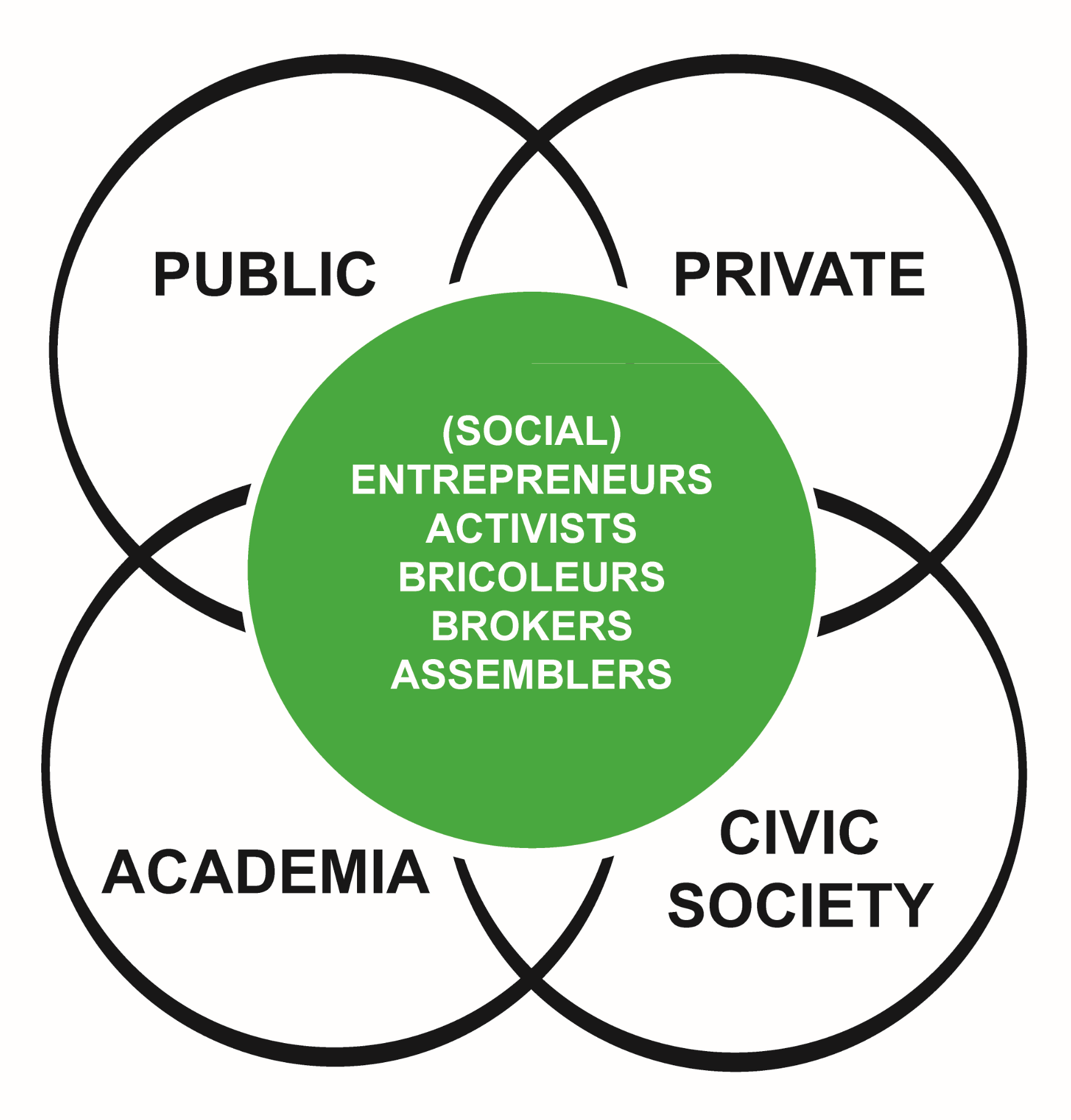
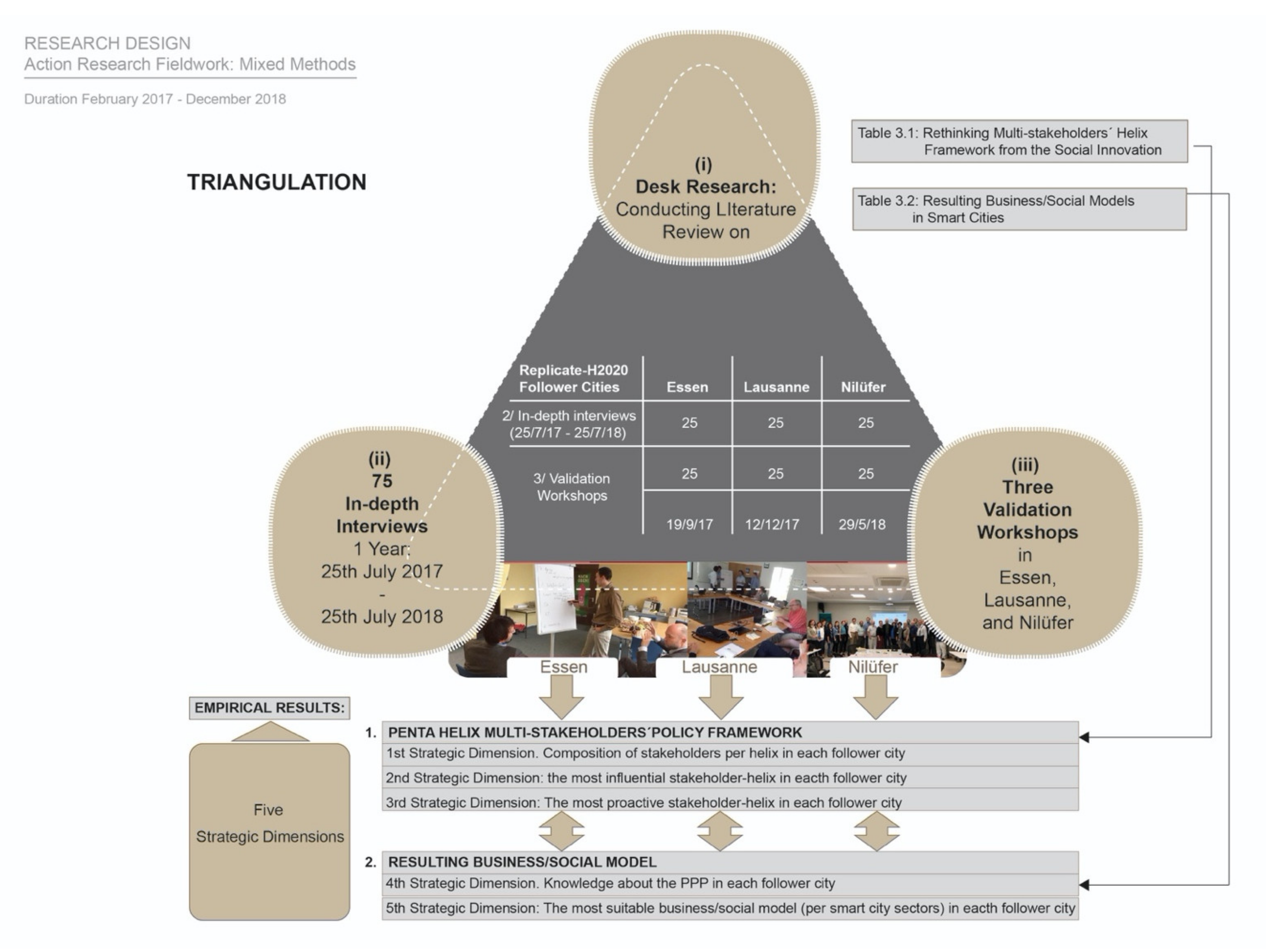
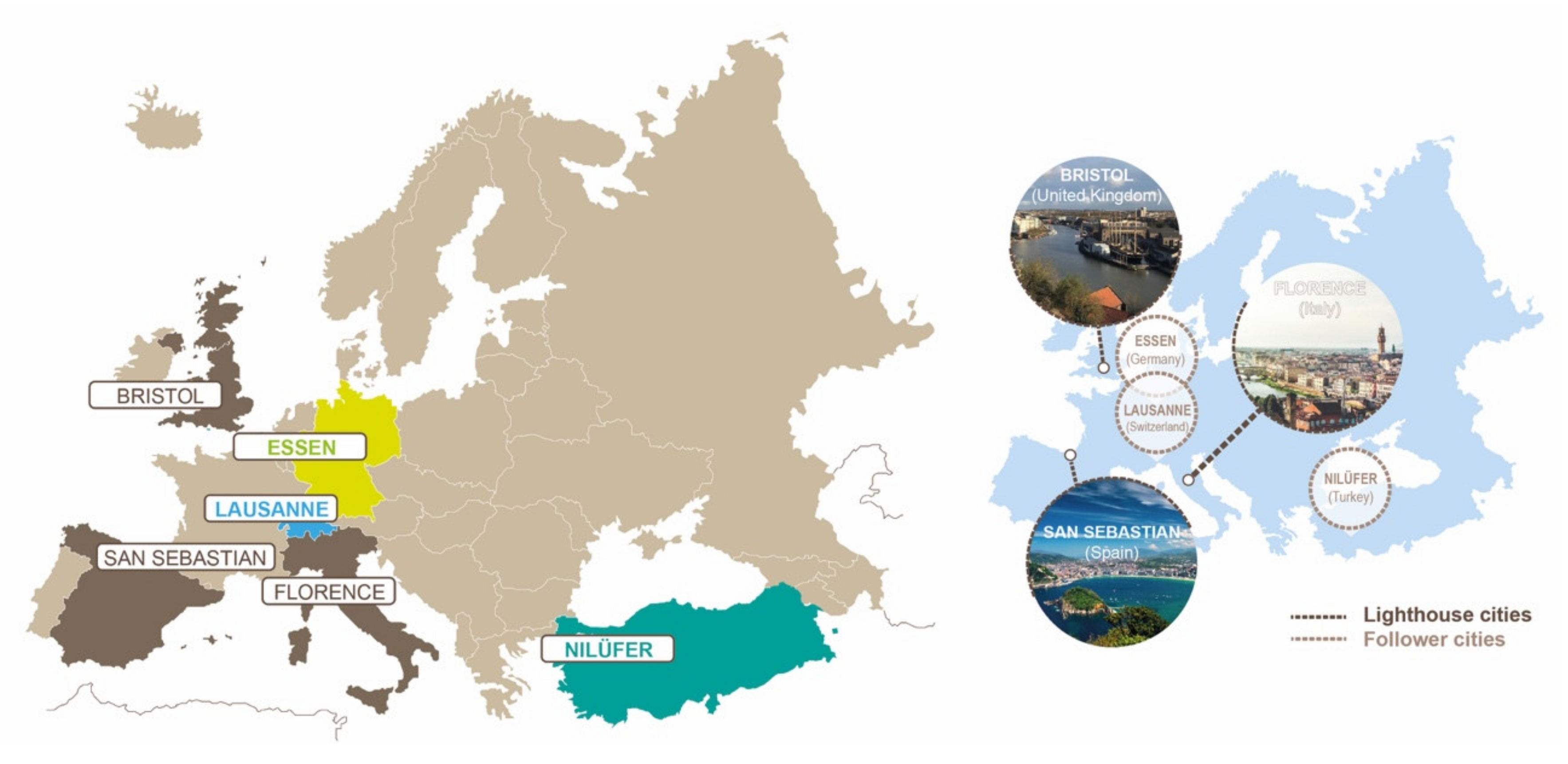
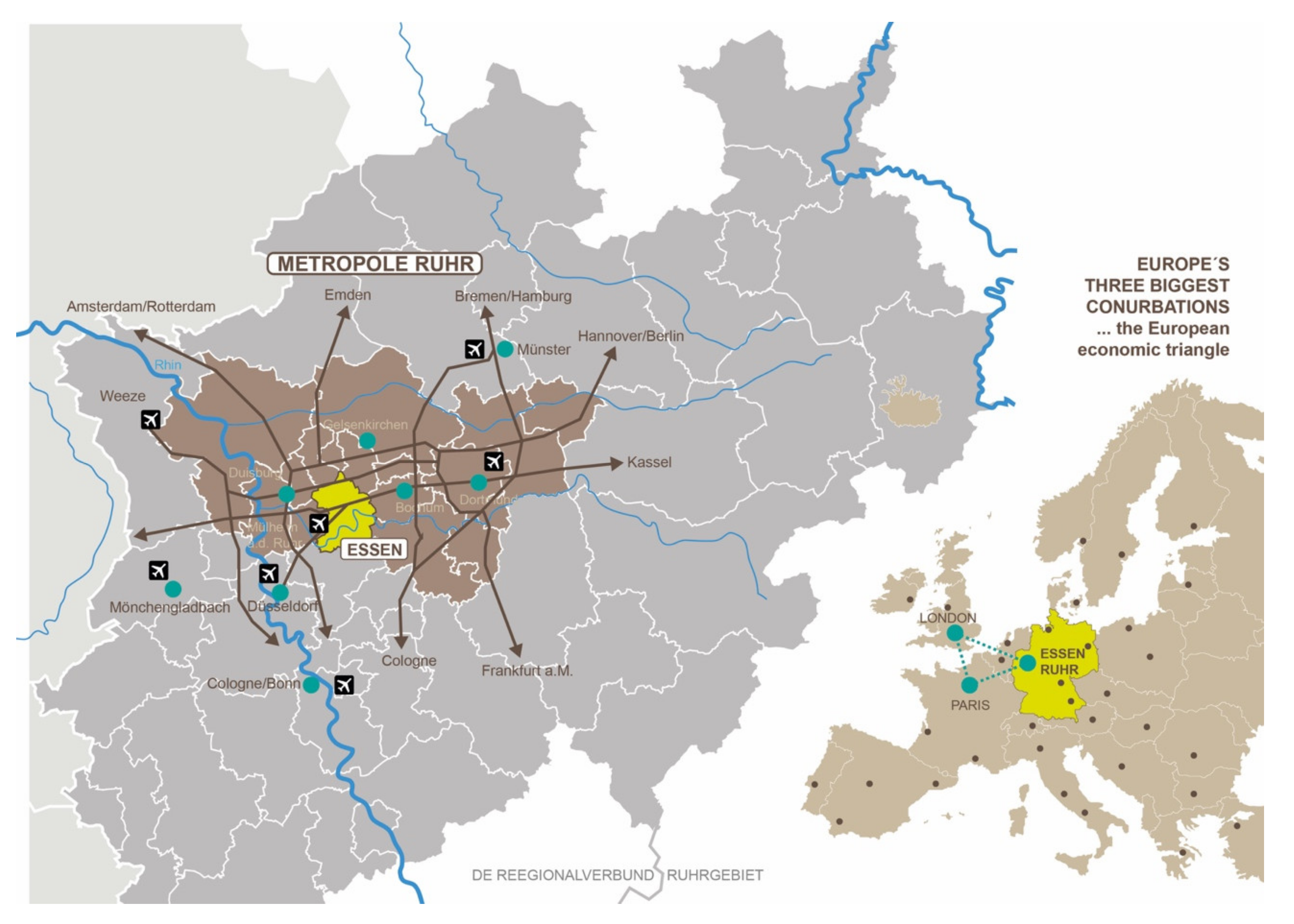
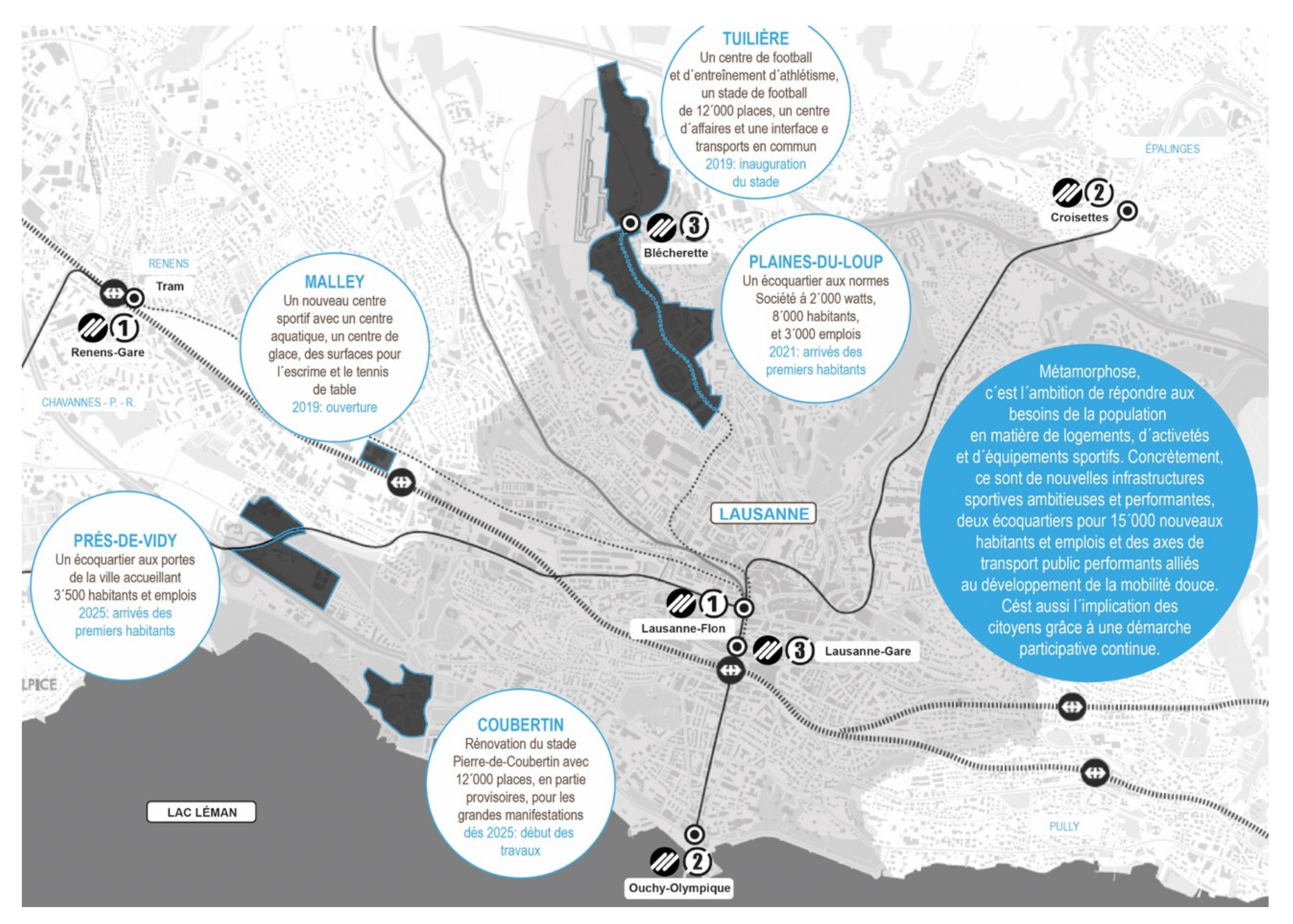
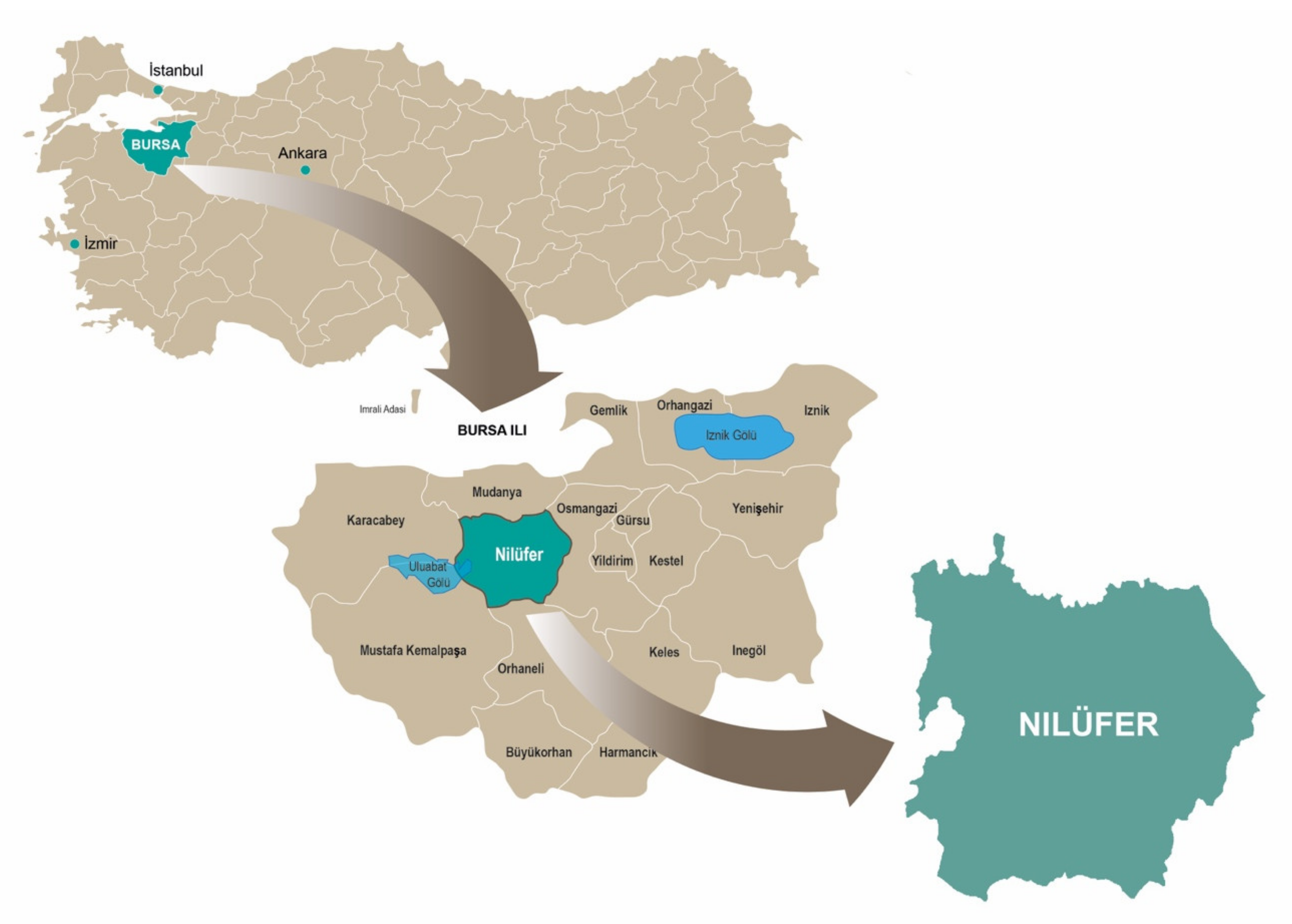
| Multistakeholder Framework Analysis | |||
|---|---|---|---|
| Triple-Helix (TH) | Quadruple-Helix (QH) | Penta-Helix (PH) | |
| Literature Review | [76,80,85,86,87,88,89,90,91,94] | [81,88,95,96,97,98,99,100,101] | [16,47,48,49,50,51,52,53,83,84,102,103,104,105,108,109,111,112] |
| Stakeholders | Public Private Academia | Public Private Academia Civic Society | Public Private Academia Civic Society Social Entrepreneurs or/and Activists |
| Citizenship Response | Invisible and Passive | Reactive and Passive | Proactive |
| Governance Scheme | Technocratic Top-Down | Institutionalised Bottom-Up | Emergent/Democratised Bottom-Up |
| Resulting Business/Social Models in Smart Cities | |||||
|---|---|---|---|---|---|
| Direct Public Provision (DPP) | Public-Private Partnerships (PPP) | Public-Private-Academic Partnerships (PPAP) | Public-Private-Academic-People Partnerships (4PA) | Urban/Data Commons (U/DC) | |
| Literature Review | [27,113,114] | [27,32,43,115] | [17,116,117,118] | [119] | [14,18,34,47,48,49,50,51,52,60,63,78,121,122,123,124,125,126,127,128] |
| Helix framework | Mono-helix | Double-helix | Triple-helix | Quadruple-helix | Penta-helix |
| Stakeholders |
|
|
|
|
|
| Executive Summary |
|
|
|
|
|
| ||||
|---|---|---|---|---|
| % | Essen | Lausanne | Nilüfer | Global |
| 1st Strategic Dimension: Composition | ||||
| 52 | 36 | 20 | 36 |
| 12 | 12 | 32 | 18 |
| 16 | 24 | 20 | 20 |
| 8 | 16 | 12 | 12 |
| 12 | 12 | 16 | 14 |
| TOTAL | 100 | 100 | 100 | 100 |
| 2nd Strategic Dimension: Influence | ||||
| 28 | 80 | 44 | 50 |
| 44 | 12 | 28 | 28 |
| 8 | 0 | 12 | 7 |
| 0 | 8 | 16 | 8 |
| 20 | 0 | 0 | 7 |
| TOTAL | 100 | 100 | 100 | 100 |
| 3rd Strategic Dimension: Proactivity | ||||
| 16 | 21 | 24 | 20 |
| 21 | 22 | 23 | 22 |
| 21 | 21 | 16 | 19 |
| 22 | 16 | 21 | 20 |
| 19 | 20 | 16 | 19 |
| Total | 100 | 100 | 100 | 100 |
| ||||
| 4th Strategic Dimension: Knowledge about PPP | ||||
| 92 | 60 | 76 | 76 |
| 4 | 40 | 12 | 20 |
| 4 | 0 | 12 | 4 |
| Total | 100 | 100 | 100 | 100 |
| 5th Strategic Dimension: Business/Social Models Suitability | ||||
| 18 | 17 | 15 | 17 |
| 21 | 23 | 21 | 22 |
| 20 | 23 | 21 | 21 |
| 19 | 19 | 21 | 19 |
| 22 | 18 | 22 | 21 |
| Total | 100 | 100 | 100 | 100 |
| Energy | ||||
| 12 | 34 | 16 | 21 |
| 36 | 6 | 28 | 23 |
| 16 | 20 | 40 | 25 |
| 20 | 20 | 4 | 15 |
| 16 | 20 | 12 | 16 |
| Total | 100 | 100 | 100 | 100 |
| Mobility | ||||
| 24 | 20 | 20 | 21 |
| 24 | 34 | 28 | 29 |
| 4 | 13 | 16 | 11 |
| 28 | 20 | 16 | 21 |
| 20 | 13 | 20 | 18 |
| Total | 100 | 100 | 100 | 100 |
| ICT | ||||
| 8 | 20 | 0 | 9 |
| 28 | 27 | 27 | 28 |
| 24 | 27 | 52 | 34 |
| 8 | 13 | 13 | 11 |
| 32 | 13 | 8 | 18 |
| Total | 100 | 100 | 100 | 100 |
© 2020 by the author. European Commission. Licensee MDPI, Basel, Switzerland. This is an open access article distributed under the terms of the Creative Commons Attribution IGO License ( http://creativecommons.org/licenses/by/3.0/igo/legalcode), which permits unrestricted use, distribution, and reproduction in any medium, provided the original work is properly cited. In any reproduction of this article there should not be any suggestion that EC or this article endorse any specific organisation or products. The use of the EC logo is not permitted. This notice should be preserved along with the article's original URL.z.
Share and Cite
Calzada, I. Democratising Smart Cities? Penta-Helix Multistakeholder Social Innovation Framework. Smart Cities 2020, 3, 1145-1172. https://doi.org/10.3390/smartcities3040057
Calzada I. Democratising Smart Cities? Penta-Helix Multistakeholder Social Innovation Framework. Smart Cities. 2020; 3(4):1145-1172. https://doi.org/10.3390/smartcities3040057
Chicago/Turabian StyleCalzada, Igor. 2020. "Democratising Smart Cities? Penta-Helix Multistakeholder Social Innovation Framework" Smart Cities 3, no. 4: 1145-1172. https://doi.org/10.3390/smartcities3040057
APA StyleCalzada, I. (2020). Democratising Smart Cities? Penta-Helix Multistakeholder Social Innovation Framework. Smart Cities, 3(4), 1145-1172. https://doi.org/10.3390/smartcities3040057





